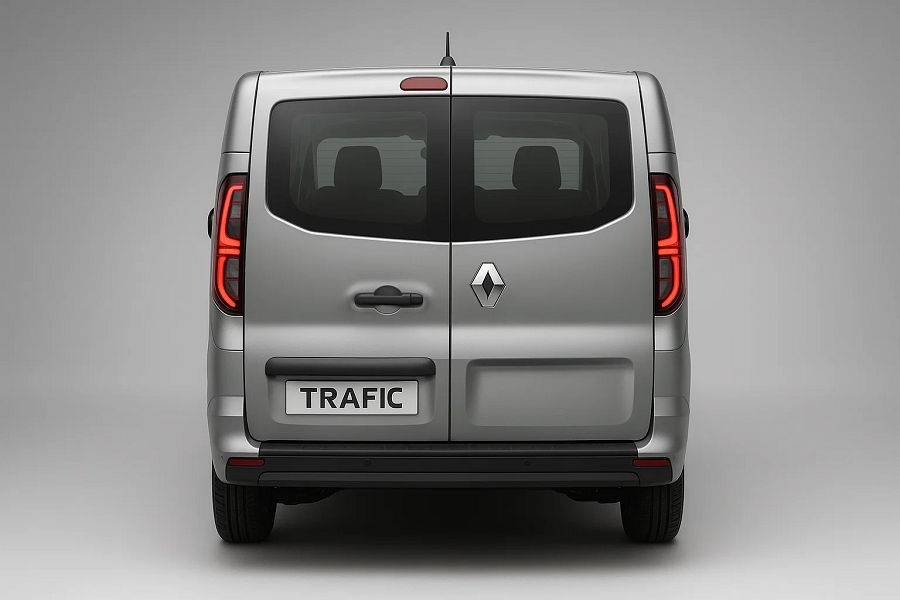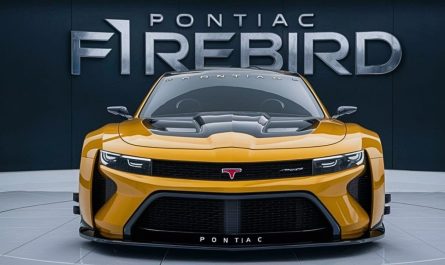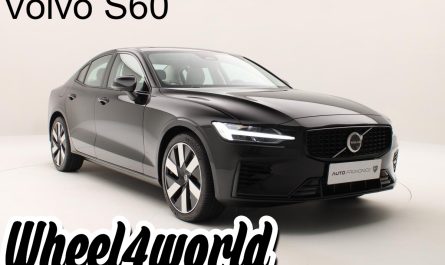The Renault Trafic has long been a staple in the medium van segment, known for its practicality and value. With the 2026 model year, Renault is introducing an all-electric E-Tech variant alongside updated diesel options, aiming to appeal to eco-conscious fleets and businesses. This guide breaks down everything you need to know to decide if it’s right for you.
TL;DR
- Engines: Diesel dCi options from 130 to 170 hp; new electric E-Tech with up to 204 hp and 52 kWh battery (TBA for final outputs).
- Payload: Up to 1,222 kg for electric; 957–1,145 kg for diesel variants.
- Cargo Volume: Ranges from 5.8 m³ to 8.9 m³ depending on body style (L1H1 to L2H2).
- Tech: Renault Easy Link infotainment with 8-inch screen, Apple CarPlay/Android Auto; connected services and OTA updates (TBA for 2026 specifics).
- Safety: Up to 10 ADAS features including AEB and blind-spot warning; Euro NCAP rating TBA.
- Expected Price Range: Starting around £34,500 for electric (after grants, estimate); diesel from £36,500 (based on current, TBA for 2026).
- What’s New vs. 2025: All-new electric E-Tech on skateboard platform; refreshed styling with updated grille and lights; enhanced ADAS and interior tech.
What’s New for 2026
The 2026 Renault Trafic builds on the current generation with significant updates. Styling tweaks include a bolder grille, LED headlights, and improved aerodynamics for better efficiency. Powertrains see the addition of the E-Tech electric model, while diesel engines get minor refinements for emissions compliance.
Renault has confirmed the E-Tech electric version, built on a new skateboard platform for better range and packaging. Hybrid options are unconfirmed at this time. Diesel models may carry over with Euro 6D-Full compliance and Stop & Start tech.
New variants include the Panel Van, Crew Van, Combi (passenger-focused), and premium SpaceClass for shuttle duties. A chassis cab for custom builds is expected, but camper conversions remain dealer-dependent. The electric E-Tech will be available in similar body styles from launch.
Good to know: The Trafic E-Tech shares production with new siblings like the Estafette and Goelette, all made in France.
Quick Specs
| Category | Details |
|---|---|
| Body Styles/Lengths/Wheelbases/Heights | Panel Van, Crew Van, Combi, SpaceClass; L1/L2 (short/long wheelbase); H1/H2 (standard/high roof); Wheelbase: 3,098–3,498 mm (TBA for electric). |
| Engines & Power (hp/kW) | Diesel: 130–170 hp (96–125 kW); Electric: 120–204 hp (90–150 kW, TBA). |
| Torque (Nm) | Diesel: Up to 380 Nm; Electric: 245–345 Nm (TBA). |
| Transmission | Manual (6-speed) or automatic (EDC dual-clutch); FWD only (no AWD). |
| Fuel Type/Battery | Diesel (AdBlue); Electric (52 kWh battery, TBA usable capacity). |
| 0–100 km/h/Top Speed | TBA for vans; Top speed ~110–130 km/h. |
| Payload (kg) | 957–1,222 kg depending on variant. |
| Towing (kg) | Braked: Up to 2,500 kg; Unbraked: 750 kg. |
| Cargo Volume (m³) | 5.8–8.9 m³ by body style. |
| WLTP Economy/CO₂ | Diesel: ~6.0–7.5 L/100 km, ~150–190 g/km; Electric: ~20–25 kWh/100 km, 0 g/km (estimates). |
| Dimensions (L/W/H mm) | L1H1: ~5,000/1,956/1,971; Wheelbase ~3,098 mm; Turning circle ~11.8 m. |
| Seating | 2–3 front; Up to 9 in Combi/SpaceClass. |
| Infotainment | 8-inch touchscreen; Apple CarPlay/Android Auto (wired); Navigation TBA. |
| ADAS Highlights | AEB, lane keep, blind-spot; Adaptive cruise (optional). |
| Warranty/Service | 3 years/100,000 km; Service intervals 30,000 km or 2 years. |
| Target Markets | EU, UK, Australia/New Zealand; Availability from H2 2026. |
Design & Practicality
The 2026 Trafic gets a refreshed exterior with sleeker LED lights, a larger grille for brand identity, and aero-optimized bumpers. Color options include solids like Glacier White and metallics like Urban Grey (TBA for full palette). Wheel choices range from 16-inch steel to 17-inch alloys.
Access is easy with twin rear doors (180-degree opening) or optional tailgate, plus sliding side doors (one or two). Load bay features include floor lengths up to 4.15 m via under-seat hatch, 1.24 m width between arches, multiple tie-down points, and optional lining or bulkheads.
Cab ergonomics shine with adjustable seats, ample storage (up to 90 liters), good visibility via large mirrors, and work features like a fold-flat middle seat for a desk, USB-C ports, and 12V sockets.
Editor’s note: The rectangular load shape maximizes space, beating some rivals in usability.
Interior, Seating & Comfort
Interior materials use durable plastics with soft-touch accents in higher trims. Sound insulation reduces road noise, and seats offer height adjustment with optional heating.
For passenger versions like Combi and SpaceClass, seating configs include 6–9 seats with modular rows for easy removal. Legroom is generous (up to 800 mm in row 2), with ISOFIX points and luggage space up to 4 m³.
Climate control is dual-zone upfront, with rear vents optional. Power points and ambient lighting add comfort in SpaceClass.
Technology & Infotainment
The dashboard features an 8-inch touchscreen with Renault Easy Link (upgrading to OpenR Link TBA). It supports wired Apple CarPlay/Android Auto, built-in navigation, and connected services like remote monitoring.
Fleet telematics integrate via app for tracking, and keyless entry is standard on mid-trims. Audio ranges from basic 4-speaker to premium with USB ports.
OTA updates are expected for the electric model.
Powertrains & Driving Experience
Diesel
Blue dCi engines (130–170 hp) pair with 6-speed manual or EDC auto. Economy is around 6–7.5 L/100 km WLTP, with AdBlue for emissions. Service intervals are 30,000 km.
Petrol
Not offered in most markets; diesel and electric dominate.
Electric
The E-Tech uses a 52 kWh battery (TBA usable), with 120–204 hp motors. Range estimates 450 km WLTP, AC charging ~7 hours (11 kW), DC up to 100 kW (30 min to 80%). Features heat pump and regenerative braking.
Ride is compliant with independent suspension, handling loads well. Steering is light for urban use, with low noise in electric. Real-world: Smooth hill starts, easy parking with sensors/cameras.
Capability: Payload, Towing & Cargo Solutions
| Body Style/Engine | Payload (kg) | Towing Braked (kg) | Cargo Volume (m³) |
|---|---|---|---|
| L1H1 Diesel | 957–1,145 | 2,500 | 5.8 |
| L2H2 Diesel | Up to 1,100 | 2,500 | 8.9 |
| L1H1 Electric | Up to 1,222 | 920 | 5.8 |
| L2H2 Electric | TBA | TBA | 8.9 |
Roof load up to 200 kg; tow-assist tech optional. Accessories: Shelving, racking, LED lighting from dealers.
Efficiency, Range & Running Costs
Diesel WLTP: 6–7.5 L/100 km; Electric: ~20 kWh/100 km (TBA). Service plans available; tires 205/65R16 (~£100 each). Insurance groups mid-range; residuals strong for electric.
Safety & Driver-Assistance
Crash structure includes reinforced zones and multiple airbags. ADAS:
- AEB (detects pedestrians/cyclists).
- Lane keep assist.
- Blind-spot monitoring.
- Rear cross-traffic alert.
- Adaptive cruise control.
- Driver attention warning.
Euro NCAP: TBA for 2026; current model 3 stars.
Trims, Options & Pricing
Trims: Business, Extra, Sport (diesel); Similar for electric (TBA).
| Feature/Trim | Business | Extra | Sport |
|---|---|---|---|
| LED Lights | Optional | Std | Std |
| Infotainment | 8-inch | 8-inch | Nav |
| ADAS Pack | Basic | Full | Full |
| Alloy Wheels | No | Opt | Std |
Pricing: Diesel ~£36,500–£45,000; Electric ~£34,500+ (estimates, TBA). Worthy options: Safety pack, parking sensors, heated seats.
Dimensions & Practical Numbers
| Variant | Length (mm) | Width (mm) | Height (mm) | Load Floor Height (mm) | Turning Circle (m) |
|---|---|---|---|---|---|
| L1H1 | 4,998 | 1,956 | 1,971 | 552 | 11.8 |
| L2H2 | 5,398 | 1,956 | 2,498 | 552 | 13.2 |
Cargo volumes: L1H1 5.8 m³; L2H2 8.9 m³.
Competitor Comparison
The Trafic faces stiff rivals in the medium van class.
| Van | Payload (kg) | Cargo Vol (m³) | Base Power (hp) | Starting Price (£, est.) | Notable Tech |
|---|---|---|---|---|---|
| 2026 Renault Trafic | 957–1,222 | 5.8–8.9 | 130 | 36,500 | Electric option, ADAS |
| Ford Transit Custom | Up to 1,400 | 5.8–9.0 | 136 | 35,000 | Plug-in hybrid |
| VW Transporter | Up to 1,300 | 5.8–9.3 | 110 | 38,000 | Premium interior |
| Toyota ProAce | Up to 1,400 | 4.6–6.6 | 120 | 32,000 | 10-year warranty |
| Mercedes Vito | Up to 1,200 | 5.5–6.6 | 102 | 40,000 | Luxury cabin |
The Trafic stands out for value and electric range, but pick it over alternatives if you prioritize French build quality and modularity. [Internal link: Medium van buying guide]
One-paragraph takeaway: For cost-conscious fleets, the Trafic offers better payload than the Vito and more variants than the ProAce, but the Transit Custom edges it on hybrid tech—choose Trafic for electric focus without premium pricing like VW.
Ownership Experience
Warranty: 3 years/100,000 km, with 12-year corrosion cover and roadside assist. Maintenance: Every 30,000 km, focusing on filters and oil; reliability is solid based on current models.
Dealer support is strong in EU/UK, with fleet upfitting for refrigeration or mobility. [External link: official Renault page]
Use-Case Guides
Small Business/Fleet
Opt for L2H2 diesel with telematics for tracking; maximize payload with bulkhead; TCO low via efficient engines.
Passenger/People-Mover
SpaceClass with 9 seats for families/shuttles; add rear climate for comfort; luggage via modular seats.
Trades
Panel Van with shelving and inverters (up to 1 kW); security locks essential for tools.
Recreation/Camper
Chassis cab for pop-top conversions; electric for quiet camping (TBA partners).

Pros & Cons
Pros:
- Versatile body options for any need.
- New electric E-Tech for zero-emissions work.
- Strong payload and towing capacity.
- Affordable running costs vs. premiums like Vito.
- Modular interior with clever storage.
- Comprehensive ADAS suite.
- French production for quality control.
- Good resale for fleet use.
- Quiet ride in electric.
Cons:
- Electric range TBA, may not suit long hauls yet.
- No AWD option for tough terrain.
- Base trims lack some tech standards.
- Pricing TBA, could rise with electric.
- Current diesel not the most refined.
- Limited petrol availability.
- Warranty shorter than Toyota’s.
- ADAS optional on entry levels.
- Turning circle larger in L2.
Buying Advice & Best Value Picks
Go for Extra trim diesel for balanced features; add safety pack for resale. Wait for official pricing if budgeting tightly, or for E-Tech if going green. Best value: L1H1 electric for urban fleets.
Release Date & Availability
Order books open early 2026, deliveries H2 2026 (unconfirmed for regions). Produced in Sandouville, France; supply chain stable.
Real-World Impressions
Press previews highlight the E-Tech’s smooth drive and 450 km range as game-changers, with handling praised under load. Watch for full road tests post-launch.
Verdict
The 2026 Renault Trafic evolves into a modern workhorse with the E-Tech electric leading the charge. It balances practicality, efficiency, and tech without premium costs. Diesel options remain reliable for traditional users. Safety and comfort suit long days. Ideal for small businesses or fleets transitioning to EV. Overall, it’s a trustworthy choice in a crowded market. Consider it if value and versatility top your list. Competitors like Ford offer more hybrids, but Trafic’s electric focus sets it apart. Availability from late 2026 makes it worth the wait for forward-thinkers.


